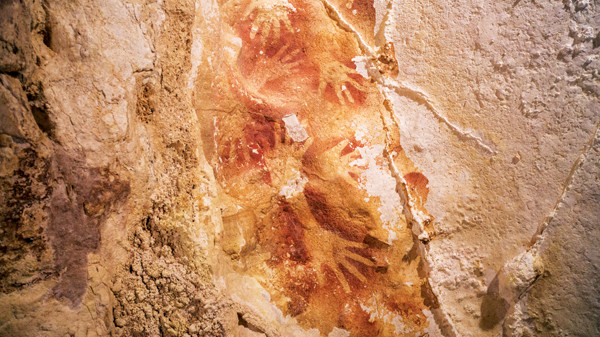
by Mary Caperton Morton Monday, January 5, 2015

Stencils of a splayed human hand in an Indonesian cave date to about 40,000 years ago. Credit: Kinez Riza.
Europe has long been thought to have been the home of the oldest art in the world — including a stash of cave paintings in northern Spain that date to about 40,000 years ago — but a new dating technique may put Indonesia on the ancient art map as well.
A dozen hand stencils and two figurative animal illustrations were originally discovered in the 1950s in a series of caves on the island of Sulawesi. For decades, the paintings were assumed to be about 10,000 years old because of the rapid rates of erosion of the area’s limestone rocks. But microscopic samples of the “cave popcorn” covering some of the artwork have revealed that the oldest images — stencils of a splayed human hand — are about 40,000 years old. A depiction of a babirusa, or pig-deer, was dated to at least 35,400 years old, making it one of the oldest figurative depictions in the world.
The find helps fill in the long-mysterious geographical gap between ancient cave art in Europe and in Australia, where Aboriginal paintings have been dated to about 30,000 years ago and red ochre crayons have been dated to about 50,000 years old. “Among the implications, it can now be demonstrated that humans were producing rock art by about 40,000 years ago at opposite ends of the Pleistocene Eurasian world,” the authors, led by Maxime Aubert of Griffith University in Australia, wrote in Nature.
© 2008-2021. All rights reserved. Any copying, redistribution or retransmission of any of the contents of this service without the expressed written permission of the American Geosciences Institute is expressly prohibited. Click here for all copyright requests.